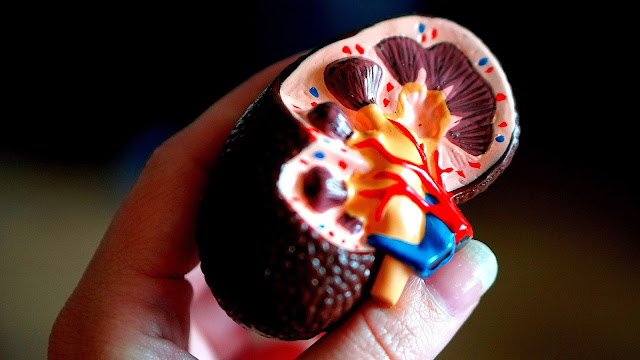Kidney Disorders and Treatments kidney stone and treatments, renal failure and treatments
Disorders Of Kidney:
There are many different disorders of kidney
•The Kidney Stones
When urine becomes concentrated,crystals of many salts e.g calcium oxilate,calcium phosphate and amonium phosphate,uric acid etc. are formed in it.
These large crystals can't pass in urine and formed hard deposits which is called kidney stones.Most stones start in kidney.
Some may travel to ureters and urinary bladder.
•Major causes of kidney stones
The major causes of kidney stones are age,diet(containing more green vegetables,salt,vitamin C and D) recuring urinary track infections,less in take of water, and alcohol consuption
•Symptoms of kidney stone
The symptoms of kidney include:
•Severe pain in kidney or in lower abdomen
•vomiting.
•Frequency and foul-smelling urine with blood and pus.
Treatment:
About 90% of kidney stones can pass through urinary system by drinking a lot of water..
•In surgical treatment the affected area is opened and stone is removed
•Lithotrispy: It is another method to remove stone from kidney. In this method non electrical shock waves from outside are bombarded on the stone in the urainary system. Waves hits the dense stone and break them. Stones become sand like and are passed through urine
•Kidney (Renal) failure:
Kidney failure means complete or partial failure of kidney to function. Diabetes mellitus and hypertension are the leading cause of kidney failure. In many cases, sudden interruption in blood supply to kidney and drug overdoses may also cause kidney failure
•Symptoms of kidney failure:
•The main symptoms of kidney failure is the high level of urea and other waste in blood,which can result in vomiting,nausea,weight loss.
•Frequent urination and blood in urine.
•Excess fluid in body may also cause swelling of legs,feets and face and shortness of breath
Treatments of Kidney failure:
The treatment of kidney failures are dialysis and Kidney transplant::
Dialysis:
Dialysis means the cleaning of blood by artificial ways. There are two methods of dialysis
Peritoneal Dialysis:
In this type of dialysis, the dialysis fluid is pumped for a time into the peritoneal cavity which is the space around gut.
This cavity is lined by peritoneum.
Peritoneum contains blood vessels. When we place dialysis fluid in peritoneal cavity, waste materials from peritoneal blood vessels diffuse into the dialysis fluid, which is then drained out. This type of dialysis can be performed at home, but must be done every day
Haemodialysis:
In haemodialysis, patient's blood is pumped through an apparatus called dialyzer. The dialyzer contains long tubes, the walls of which act as semi-permeable membranes. Blood flows through the tubes while the dialysis fluid flows around the tubes.
Extra water and wastes move from blood into dialysis fluid. The cleaned is then returned back to body. The haemodialysis treatment are typically given in dialysis centres three times per week.
The kidney transplant:
We know that dialysis needs to be repeated after every few days and is unpleasent for patients and attendents another treatment for the end stage of kidney failure is kidney transplantation.
It is the replacements of patient's damaged kidney with a donor healthy kidney. Kidney may be donated by a deceased donor or living donor.
The donor may or not be relative of the patient. Before transplant the tissue protiens of donor and patient are matched.
The donor's kidney is transplanted in patient's body and is connected to the patient's blood and urinary system. The average liftime for donated kidney is ten to fifteen years.
When a transplant failed the patient may be given a second kidney transplant. In this situation, patient is treated with dialysis for some intermediary time problems after a transplant may include:
•Transplant rejection
•infection
•Imbalances in body salt which can lead to bone problems and ulcer..





Post a Comment